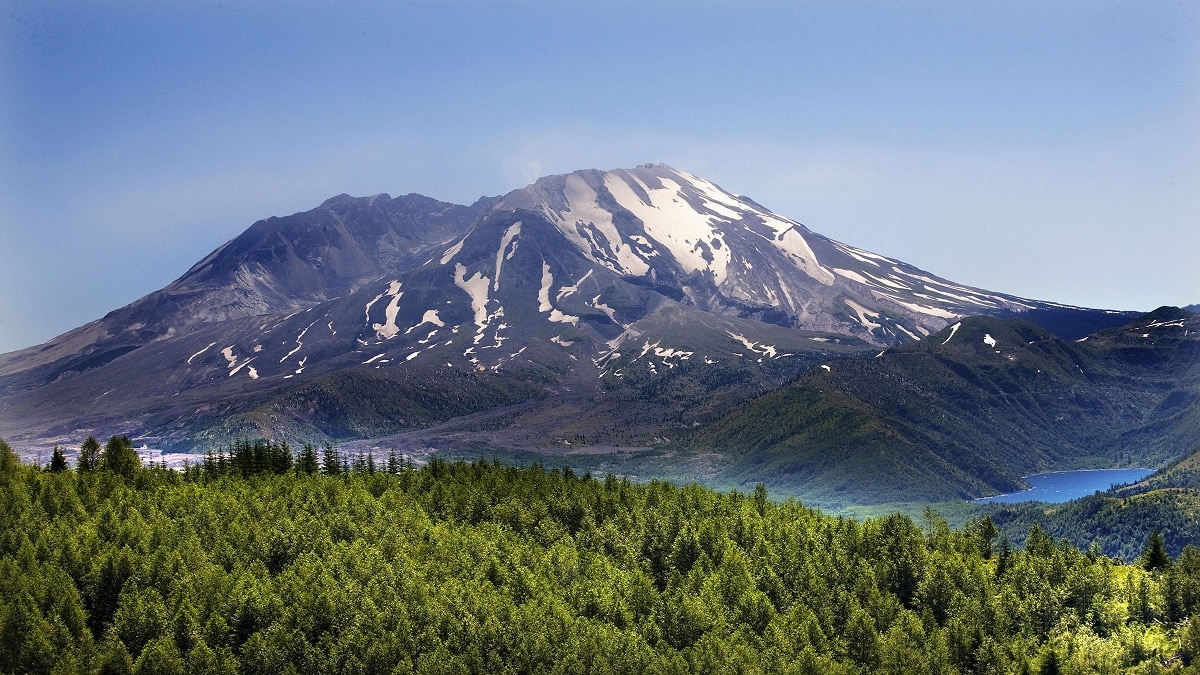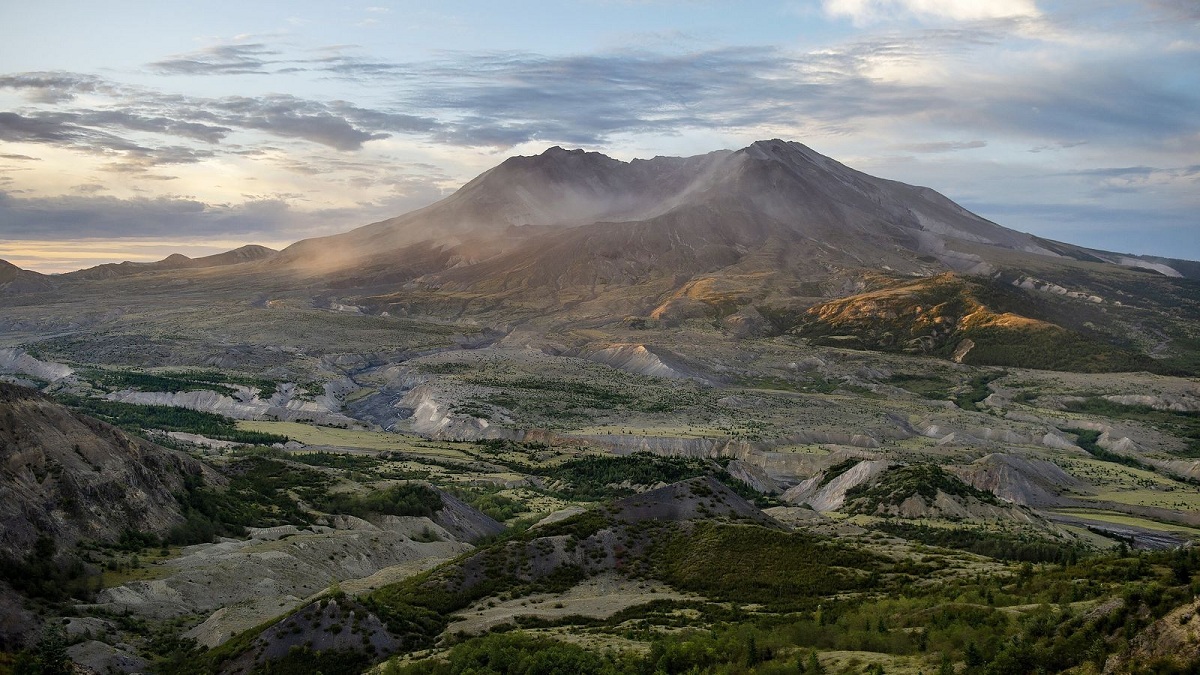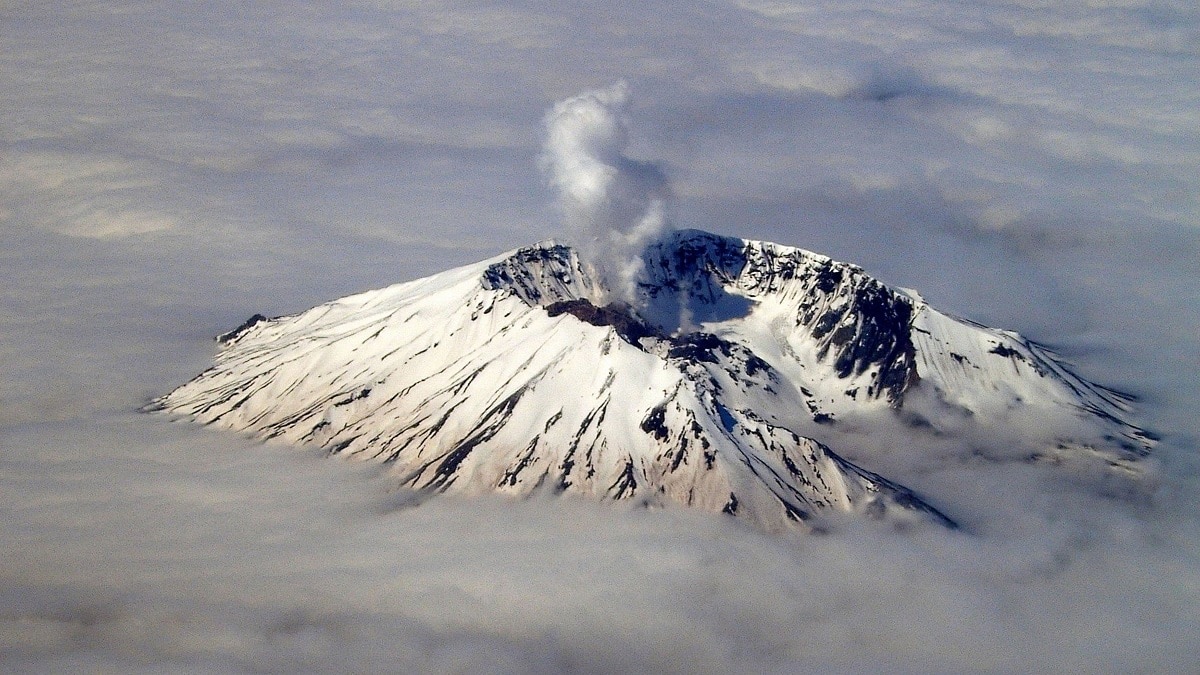
El Mount Saint Helena is an active volcano in North America, rising majestically in southwestern Washington state in the United States. Its English name is St. Helens, and Native American groups refer to it as Lawetlat'la, Lawalaclough, and Tahonelatclah. Its current name comes from Elaine Fitzherbert, XNUMXst Baron of Saint Helena and a friend of explorer George Vancouver, who surveyed the area when it was little known.
In this article we are going to tell you all the characteristics, origin, geology and eruptions of Mount Saint Helena.
Location

Mount Saint Helens is a well-known active volcanic formation located in Scamania County, Washington State, in the Pacific Northwest Territory of the United States of America. At about 2.550 meters above sea level, the term "current" is used because its widely documented eruptions have lowered the height of this volcanic structure.
It is located exactly 154 kilometers from Seattle and about 85 kilometers northwest of Portland, Oregon. This massive volcanic structure is part of the Cascade Range, and the site was originally known by the name Louwala-Clough, which means "smoky volcano or mountain," in the language of so-called famous locals, a local tribe called the Klickitat.
Saint Helena owes its name to the diplomat Erin Fitzherbert, since he was the first baron of Saint Helena, a great citizen friend of George Vancouver, a great and curious explorer who was in charge of inspecting the area of the eighteenth century in Santa Helena. The volcano is known for its massive explosions containing massive amounts of ash and so-called pyroclastic flows.
Formation of Mount Saint Helens

Compared to other volcanoes in the Cascade Range, Mount Saint Helens is a relatively young volcano. According to the United States Geological Survey (USGS), its formation It occurred in 4 stages of eruption that began about 275.000 years ago, although the Smithsonian Institution Global Volcanic Activity Program indicates that it began in 9 stages formed 40.000-50.000 years ago during the eruption. In any case, during the Holocene it was the most active of all the volcanoes in the Cordillera.
The USGS Volcanic Hazards Program indicates that it is located near the subduction zone of the Juan de Fuca plate on the west coast of the United States and is the result of large-scale movements of the Earth's crust.
In a period dating to 12.800 years ago, the ancient cone of Mount St. Helens formed by the eruption of volcanic eruptions, lava domes, and other pyroclastic flows that reached lands farther from the base of the volcano. In the last 3000 years, the cone has acquired the most modern structure. For its part, the Global Volcanism Program mentions that the cone was formed by the release of lava and pyroclastic material sometime before 2200 years ago, while the modern cone is a continuum of andesite, dacite, and basalt fragments resulting from flow.
Mount Saint Helens eruptions

The 1980 eruption was the most studied of the 2340th century, but volcanoes have a long history of eruptions. The oldest confirmed event occurred in 1860 BC. C. Other eruptions occurred in 1180a. C, 1110. C, 100a. C, 420 BC C, AD 1831 C, on August 26, March 1847, 27, March 1980, 5, November 1990, 1, and October 2004, XNUMX.
A total of 40 eruptions have been confirmed over time, with some uncertainties. An earthquake occurred under the volcano on March 20, 1980, and other less intense earthquakes occurred between the 20th and 27th of the same month. Just at noon on the 27th, a column of ash and steam came off the mountain, reaching a height of 1.829 meters. But the worst did not happen.
On the morning of May 18, an earthquake of magnitude 5.1 occurred and the northern part of the volcano began to collapse. what happened was a landslide and a 9-hour Pliny eruption. The eruption column was 24 kilometers high and the ash touched parts of 11 US states. The balance is 57 dead (including a photographer and a geographer) and millions of dollars in economic damage.
Last eruption
It can be said that everything started exactly on March 16, especially in 1980, it had a special beginning, probably a series of earthquakes, whose origin seems to be in the great movement of magma contained in the Santa Elena mountain. deep Earthquakes corresponding to a phenomenon of magnitude 4,2 on the Richter scale may be registered in this way on March 20, maintaining a relevant and standardized time zone, such as that of the Pacific Ocean, marked at 15:47.
All of this lies below the surface of the aforementioned northern Mount St. Helens as the epicenter, importantly demonstrating the activity of this great volcano after more than 123 years of inactivity.
It is said that after this a series of small earthquakes were added and somehow all the correctly installed seismometers were saturated during the deployment of the entire area, until reaching a maximum between March 25 and two days later, during these two quite busy days.
A considerable number of 174 earthquakes were recorded in the famous earthquakes of 2,6 on the Richter scale or higher. It was after this that earthquakes increased on a scale of 3.2 degrees and they were also increasing in frequency between April and May, at the beginning of April, for some reason, there was an average of 5 earthquakes of about 4 degrees or more every day.
But in the week before that, on May 18, the average had hovered around a streak of 55 quakes a day, initially with no hint or direct evidence of a future eruption, but some form of small quake causing the big one. As shown above, snow and ice aggregates observed from the air recorded avalanches. At 12:36 pm on March 27, there was a plummeting explosion of some sort, and many people said it happened twice at the same time.
I hope that with this information you can learn more about Mount Saint Helena and its characteristics.